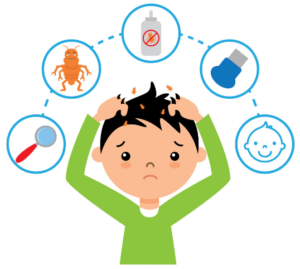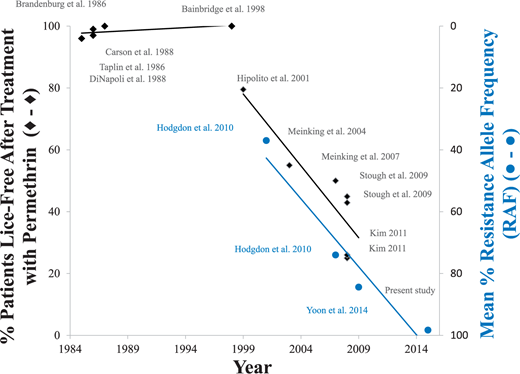In my own experience working with over the counter (OTC) medication/lotions/cremes, I found they did not work very well (if at all). On the second day after treatment (after following the directions on the packaging), there were several live lice visible on my daughters head. I’m pretty sure my daughters got the super drug resistant lice that have been discussed so much as of late.
Backing up my experience, reports are that drug resistant head louse has spread to 42 states. Check out the articles below for more information about the super lice i’m talking about.
- Super Lice
- Business is booming with Head Lice
- Study Finds Ninety-Eight Percent Of Head Lice In At Least 42 States Now Resistant To Common Over-The-Counter Treatment Options
- Expansion of the knockdown resistance frequency map for human head lice
What does this mean?
Its a gamble, but with 2% odds of winning.
Take a look at the study results – In 1984, these Permethrin based OTC products worked pretty well, however in 2014 the effectiveness of such over the counter Permethrin based insecticides were incredibly ineffective. It’s almost as if head lice got the memo in 1999 and learned what to do to not die from the pesticide!
By purchasing and using an OTC Permethrin or Pyrethrin based home remedy (to which head lice have grown increasingly resistant, you may find that you’ve wasted time, money, and emotional energy on something that doesn’t work. Parents of children don’t typically have the luxury of spending time aimlessly when ever-present household chores, schedules, and 10am wine time (hey, I’m a SAHD) need attending to.
In no way does my experience and internet studies mean these over the counter lice treatment products do not work, it’s just that I absolutely despise gambling on a decision where the negative outcome equals wasted money, time, and exposure to potentially harmful substances which may affect the health and well-being of the people I care for.

what does the CDC say about all this?
The following are several common reasons why treatment for head louse infestation may fail:
- Misdiagnosis. The symptoms are not caused by an active head lice infestation.
- Applying the treatment to hair that has been washed with conditioning shampoo or rinsed with hair conditioner. Conditioners can act as a barrier that keeps the head lice medicine from adhering to the hair shafts; this can reduce the effectiveness of the treatment.
- Not following carefully the instructions for the treatment that is used. Some examples of this include not applying a second treatment if instructed to do so, or retreating too soon after the first treatment before all the nits are hatched and the newly hatched head lice can be killed.
- Re-treatment of head too late after new eggs have already been deposited.
- Resistance of the head lice to the treatment used. The head lice may have become resistant to the treatment. If the treatment used does not kill the head lice, your health care provider and pharmacist can help you be sure the treatment was used correctly and may recommend a completely different product if they think the head lice are resistant to the first treatment.
- Re-infestation. The person was treated successfully and the lice were eliminated, but then the person becomes infested again by lice spread from another infested person. Sometimes re-shampooing the hair too soon (less than 2 days) after correctly applying and removing Permethrin can reduce or eliminate any residual (continued) killing effect on the lice.
